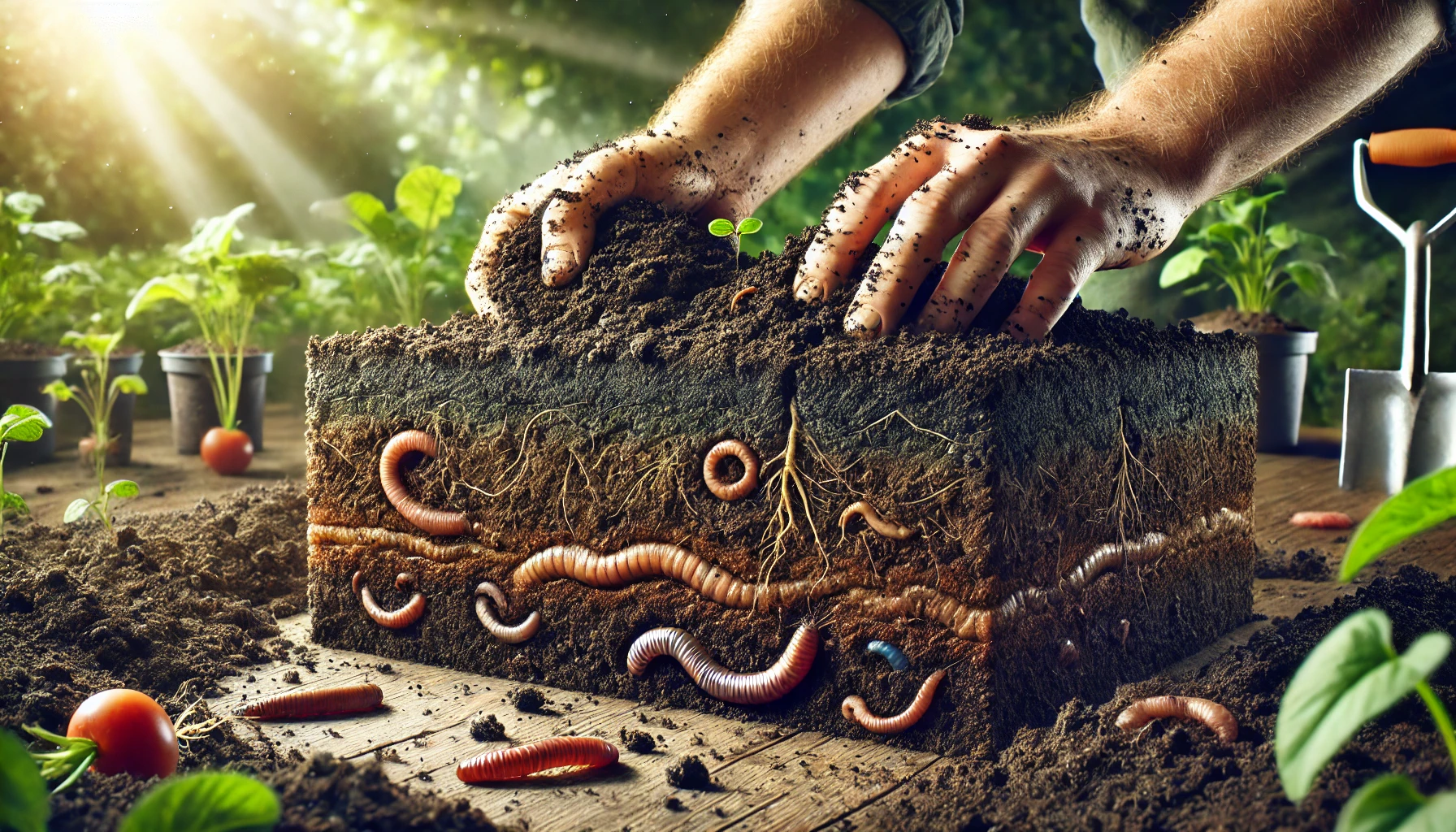Great Gardens Begin with Great Soil
If you’ve ever wondered why your plants aren’t growing as expected—even with plenty of sunlight and water—the answer often lies beneath your feet: the soil. Soil is much more than just dirt; it’s a living, breathing ecosystem that directly affects how well your garden grows.
Understanding your garden soil is the foundation of successful gardening. In this guide, we’ll explore what makes good soil, how to test and improve it, and how to match the right soil to the right plants.
1. What Is Soil, Really?
Soil is made up of four main components:
- Minerals (sand, silt, clay)
- Organic matter (decaying plants and animals)
- Air
- Water
It also contains billions of living organisms like fungi, bacteria, and worms, all working together to support plant life.
🧬 Healthy soil is alive. It acts like a sponge and a pantry, holding nutrients and moisture for your plants to absorb when needed.
2. Types of Soil: Which One Do You Have?
There are several basic types of garden soil. Each has unique characteristics:
Sandy Soil
- Drains quickly
- Warms up fast in spring
- Poor in nutrients
Clay Soil
- Holds water well (sometimes too well)
- Rich in nutrients
- Heavy and slow to drain
Silty Soil
- Soft and smooth
- Holds moisture well
- Fertile, but can compact easily
Loamy Soil
- Ideal for most plants
- Balanced mix of sand, silt, and clay
- Retains moisture but drains well
- Rich in organic matter
🌱 If you’re lucky enough to have loamy soil—congrats! If not, don’t worry. Most soil can be improved with the right techniques.
3. How to Test Your Soil
Before planting anything, it’s helpful to test your soil’s:
- Texture
- pH level
- Nutrient content
DIY Texture Test:
- Take a handful of moist soil.
- Rub it between your fingers:
- Gritty = sandy
- Smooth = silty
- Sticky = clay
pH Test:
Use a pH test kit or a digital meter. Most plants prefer a slightly acidic to neutral pH of 6.0 to 7.0.
Nutrient Test:
Test kits from garden centers can reveal nitrogen, phosphorus, and potassium levels—key nutrients your plants need to thrive.
4. Common Soil Problems and How to Fix Them
Even the worst soil can be improved. Here are a few common issues and solutions:
Problem: Soil Drains Too Quickly
- Solution: Add compost, coconut coir, or vermiculite to improve water retention.
Problem: Soil Stays Soggy
- Solution: Mix in sand, perlite, or organic material to increase drainage.
Problem: Compacted Soil
- Solution: Aerate by loosening with a fork or grow deep-rooted cover crops.
Problem: Poor Nutrient Content
- Solution: Apply organic compost or aged manure regularly.
5. How to Improve Your Garden Soil
Improving soil is an ongoing process. Here are proven methods:
1. Add Organic Matter
Compost, shredded leaves, and aged manure add nutrients and improve structure.
2. Mulch Your Garden Beds
Mulch protects soil, retains moisture, and slowly breaks down into organic matter.
3. Rotate Your Crops
If you’re growing veggies, change planting locations each year to avoid depleting the soil.
4. Grow Cover Crops
Also called “green manure”, these crops (like clover or rye) enrich the soil when tilled under.
5. Avoid Chemical Overuse
Excess fertilizers or pesticides can kill beneficial soil microbes. Stick to organic where possible.
6. Soil for Container Gardens
If you’re growing plants in pots, avoid using regular garden soil. Instead, use:
- Potting mix, which is lighter and drains well.
- Mix in perlite or vermiculite for aeration.
- Add slow-release fertilizer or compost for nutrients.
🪴 Containers dry out faster than ground soil, so monitor moisture levels daily.
7. Matching Soil to Plant Types
Different plants prefer different soil conditions:
| Plant Type | Preferred Soil Type |
|---|---|
| Succulents/Cacti | Sandy, well-draining |
| Vegetables | Loamy, nutrient-rich |
| Blueberries | Acidic (pH 4.5–5.5) |
| Roses | Loamy, rich in compost |
| Herbs (like thyme) | Slightly sandy, dry |
📌 Always read the care instructions for the plants you buy—they’ll often include soil recommendations.
Healthy Soil = Healthy Plants
The secret to a vibrant, productive garden lies underground. Once you understand your soil—its type, texture, and health—you’ll be able to give your plants exactly what they need to flourish.
So, don’t just plant and hope for the best. Get to know your soil, and you’ll grow a garden that thrives season after season.
